Introduction
It is well known that the creation of the European Union and its free market (i.e., the free circulation of goods, people, and merchandises) fostered "the need for re-equation of the role of foreign languages in the present society” (Cruz & Medeiros, 2006, WEB). In fact, society is, in a growing way, the mixture of identities and languages where the attitudes, values, beliefs and behaviours integrate and interact with the Other (cf. Kramsch, 1993). The concept of the ‘Other’ was coined by Husserl who applied it as the basis for intersubjectivity in the scope of the psychological and social relations within society. This concept can be used to stress the main differences between two or more groups, according to specific criteria. Therefore, learning languages becomes a need in a Europe where distances are shortened, and interchanges are facilitated and developed. Within this scope, it is our aim with this article to disseminate the European Primary Teacher Education programme and an example of its outcomes. This programme allows for the development of skills in a collaborative and interdisciplinary way, by taking into account the European Union’s values and plurilingual and pluricultural richness.
The European Dimension within the Primary School: the development of a pro-active citizenship through plurilingual and intercultural approaches
Central to the European Union's fundamental values are respect for human dignity and human rights, freedom, democracy, equality and the rule of law, which unite all the member states. Bearing all these values in mind, all European Education Systems foster practices which promote: a) acquisition of appropriate skills, knowledge, dispositions and attitudes; b) language learning, cultural transmission and the establishment of individual and collective identities; c) preparation for democratic citizenship; d) establishment of a knowledge-based society; e) social inclusion and cohesion; and, of course, f) success and achievement for all pupils (cf. Starkey, 2003).
Considering that languages play a key role in all forms of education, schooling and subject teaching, Cruz and Orange (2016) add,
taking into consideration that pupils may create and express themselves through languages, we may consider that language learning is the basis for professional success in the 21st century. Therefore, we believe that language education and cultural understanding may be at the heart of developing critical cultural awareness, i.e., global awareness for pupils. In this way, by learning languages, pupils shall develop skills which allow them: on the one hand, to interact with pupils from the target language and cultures, discussing issues and finding possible solutions towards them; on the other hand, they may develop respect towards their points of view and values, which can be different from their own. (p. 2)
In fact, language learning involves more than just a command of linguistic means of communication. Language is a tool for acquiring knowledge, and for developing personal and social identity of the person, both as an individual and a social actor. Language education is therefore a fundamental transversal element of schooling, and is not confined to those points in the timetable when languages are taught as subjects (Vommer, 2006). As stated by Byram et al. (2013),
(…) Perhaps as a consequence of globalisation, new technologies, and mass economic and refugee migration, it has become clear that communicative language teaching too, with its focus on sociolinguistic appropriateness and politeness, is inadequate to the task of teaching for communication. This new social context requires consideration of the ways in which people of different languages — including language learners themselves — think and act, and how this might impact on successful communication and interaction. (…) Teachers and learners now need to be ‘aware’ of other people’s ‘cultures’ as well as their own, and therefore, the term ‘intercultural (communicative) competence’ has emerged, along with other terms such as ‘cultural awareness’ and ‘transnational competence’. (p. 1)
While a good level of language proficiency is indispensable when it comes to sharing information, it does not guarantee that understanding will take place. Words in themselves may be too limited a dimension. The critical factor in understanding has to do with cultural aspects that exist beyond lexicon and that may interfere with (or prevent) effective communication between members of different cultures.
In our opinion, language education should involve both plurilingual and intercultural approaches (Figure 1). In fact, these sorts of approaches put languages at the service of a quality education which takes into account the general aims of the school and the learner’s rights. The plurilingual competence “is not seen as the superposition or juxtaposition of distinct competences, but rather as the existence of a complex or even composite competence on which the user may draw” (Council of Europe, 2001 p.168).
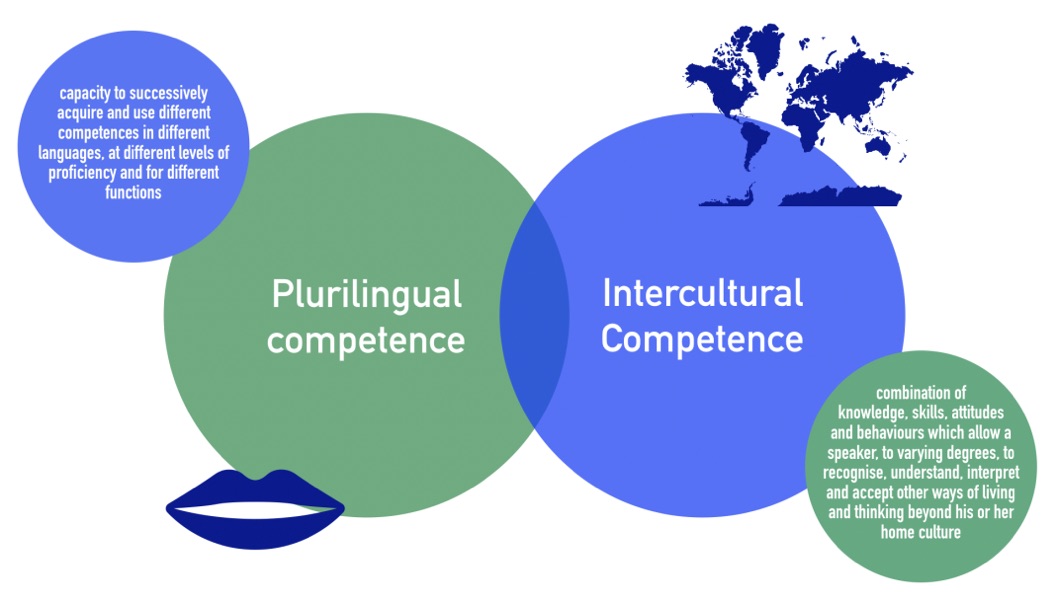
Figure 1: Plurilingual and Intercultural Competences
The plurilingual competence involves the ability to: a) switch from one language or dialect to another; b) express oneself in one language and understand the other; c) call upon the knowledge of a number of languages to make sense of a text; d) recognise words from a common international store in a new guise; e) mediate between individuals with no common language, by bringing the whole of their linguistic knowledge into play; f) experiment with alternative forms of expression in different languages or variations; g) exploit and use paralinguistics (mime, gesture, facial expression, etc.). (cf. Beacco et al., 2010).
The development of practices based on plurilingual competence caters to mediation, the creation of a pluricultural space for communication and learning, in which one is able to reduce affective blocks/tensions and build bridges towards the new, the other. By creating a third space in a conversation, one will be able to (co-)construct new information and negotiate meaning with the Other. Within this scope, a teacher should develop classroom activities which “can help pupils acquire interest in and curiosity about “otherness”, and an awareness of themselves and their own cultures seen from other people’s perspective” (Byram et al., 2002, p. 10).
In this way, the plurilingual competence fosters the development of the intercultural competence, understood as “the ability to develop targeted knowledge, skills and attitudes that lead to visible behaviour and communication that are both effective and appropriate in intercultural interactions” (Deardorff , 2006, p. 2). It cannot be acquired in a short space of time, as it implies a lifelong process which needs to be addressed explicitly in learning, and stimulated through reflection- a powerful tool on the journey towards achieving it.
According to Byram (2006), one should take into account that:
- plurilingual and intercultural education is not intended for the privileged elite, i.e., it is fundamentally inclusive and can be implemented in all sectors of education, including vocational training, all too often confined to purely practical objectives;
- plurilingual and intercultural education is not to be thought of as a new methodology for the teaching of languages, i.e., it is rather a change in perspective, characterized by the fact that it involves not only foreign languages but languages in proximity, the repertoires of learners;
- plurilingual and intercultural education is not a “revolution”, i.e., it takes into account data related to the sociolinguistic and sociocultural environment and the role of social representations which may sometimes influence the way pupils learn the culture(s) of the target language.
When we think of Europe, we can easily think of multilingual societies and plurilingual individuals. However, we should bear in mind that every society is a multilingual one, every identity is plural in its essence, every language and culture coexists with other dialects or subcultures and every school mirrors its own society, being therefore a space in which one may find a plurality of languages and cultures (see Figure 2). Within this context, teachers and educators are seen as empowering agents of plurilingual and intercultural mediation who take diversity as a chance and not as a problem, as skilled cultural navigators who invite others to establish social dialogue, promote cohesion, stimulate the critical thinking in a glocal school and in following a cross-curricular approach (cf. Starkey, 2002). The concept of glocal is believed to have been first coined by Akio Morita, founder of Sony Corporation. This concept was later developed in the 1990s by several sociologists, in the sense of a process combining the local concerns with the global tendencies.
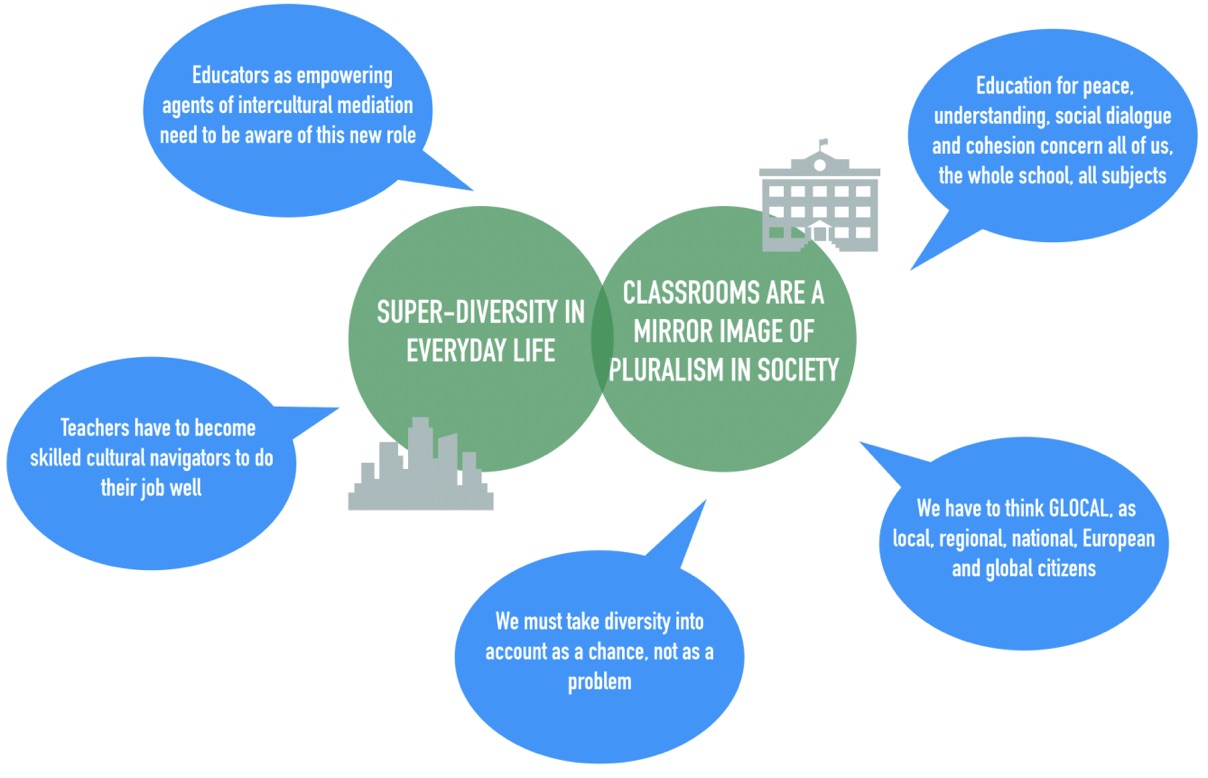
Figure 2: The Matrix of Super-diversity and Pluralism within our Glocal Schools
The European Primary Teacher Education (EPTE): the lifelong-learning programme and its identity, goals and curriculum
School education is increasingly acknowledged as a key area for improvement in all member states. As stated at the official EPTE’s webpage (University of Ljubljana, 2017),
One should not forget that teacher education is strongly influenced by national political demands and sometimes parochial values, traditions and sentiments. This is understandable since teachers have large and important co-responsibility for the teaching and educating of new citizen of specific a country and contribute to the ongoing identity of this very country.
Trying to improve teacher education and contributing towards the improvement of school education based on European values, the EPTE programme was thereon born.
The EPTE programme (see Figure 3) is a lifelong learning programme within the ERASMUS Multilateral projects action and ERASMUS Curriculum Development Projects subaction (502066-LLP-1-2009-1-NL-ERASMUS-ECDEM).
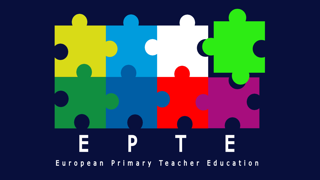
Figure 3: EPTE Logo
The main coordinator of the EPTE project was originally the Hogeschool van Arnhem in Nijmegen, Netherlands, and The Porto Polytechnic – School of Education was the international co-coordinator. Other participant institutions included the following: Pädagogische Hochschule Oberösterreich, Linz, Austria; Uniwersytet Marii Curie-Skłodowskiej, Lublin, Poland; University of Constantine the Philosopher, Nitra, Slovakia; Umea University, Umea, Sweden.
The EPTE programme “was created when seven institutions joined forces to confront national demands and procedures with an ideal of building a 'European Teacher'” (Krek et al., 2012 and (University of Ljubljana, 2017). The idea was about departing “from the local and national environment and tradition and to use a common European heritage to build a new European (…)” (idem).
As one can read in the document ‘Good Practices Report: participatory citizenship in the European Union’ (Kreket al, 2012, p. 118 and EPTE, 2017, WEB), the EPTE curriculum is
an agreed and accepted part of the first cycle degree of each TEI [Teacher Education Institutes]. The objective was to develop and deliver a full one-year (two semesters) programme for primary teacher education. The curriculum has an agreed European core curriculum for Primary TE [Teaching Education], a special European profile and an elective part for the individual student. While dividing the curriculum into 6 areas (language, mathematics, social and natural sciences, arts, pedagogic and didactics, cultural and philosophical studies), experts are involved from all the TEI’s and contribute to the development of the shared curriculum.
After the curriculum development stage, the EPTE partners agreed to host the programme in rotation, every academic year, with the contribution of the other members, who must send both students and teachers to the host institution. The subjects and corresponding programmes which the students have the chance to undertake are accessible, for instance, by clicking on the following links at the University of Ljubljana, Faculty of Education, which hosted one of the last editions:

Table 1: EPTE Courses
The main goals of the project were: a) to develop with European experts and coordinators from the seven institutions / countries, a curriculum that did not exist; b) to use this curriculum to organize a continuous transnational student mobility within the European Area of Higher Education. This trans-mobility and knowledge exchange between experts of the different European institutions is an added value in itself, but it works as a moving force to educate teacher-students within the same spirit, i.e., collaboratively. The EPTE consortium of Higher Education Institutions have managed to keep and improve the initial spirit and make this programme an example of success since 2012, date of the first edition. The EPTE programme “is aiming at a selected group of excellent students from the participating institutions in order to give rise to a 'European teacher'” (University of Ljubljana, 2017).
Luko’s Project: an example of the EPTE’s programme outcomes
This project was developed during the EPTE Porto edition. In order to develop Luko’s project, the teachers-to-be worked with two third-year classes in a private school in the Porto area. One of the groups included 22 pupils and the other 20, with ages ranging between 8 to 10 years old. Since their placement as future teachers, pupils were very curious and showed interest by trying to learn about their teachers’-to-be linguistic repertoire and cultural background. In fact, as these pre-service teachers were from different European countries and shared no knowledge of Porto, that context provided them a natural ground to share ideas and experiences related to migration and linguistic and cultural plurality or difference.
As is known, a teacher must communicate his/her feelings and values and help pupils to develop a human mind and spirit. Teachers have a powerful role in awakening pupils towards problems felt within the local society they are part of, fostering their critical thinking skills from an early learning stage. Within this context, the refugee topic is a current issue in Europe and needs to be addressed and explored at every school throughout Europe. More than one million people (mainly Syrians) fled to Europe in the previous year. According to the Migration Data Portal (https://migrationdataportal.org/themes/forced-migration-or-displacement), over half of the population of Syria has been displaced since 2011 (about 5.7 million people) and was forced to flee to European countries. These refugees have fled from war in their home countries and are seeking their family members in Europe, sometimes travelling through several countries.
Coming from different countries (Slovenia, Germany, Slovakia and The Netherlands), in which they had had the chance to reflect upon the refugee topic, these EPTE teachers-to-be noticed that these Portuguese children were not aware of the refugee crisis at all. Therefore, these future teachers had the chance to develop and put into practice some activities related to the topic. Taking several modules into account, they created an interdisciplinary learning atmosphere. In this way, the pupils were able to connect their ideas within different subjects and acquire foundational knowledge with an understanding of when and how to use their knowledge and ideas in different fields. By articulating concepts from the different subjects, the pupils gained a deeper understanding of the topic and improved their critical thinking.
Following a project work methodology, the pupils were able to create a picture book about the refugee crisis, which was created collaboratively. The picture book (Figure 4) can be downloaded at
Following a project work methodology, the pupils were able to create a picture book about the refugee crisis, which was created collaboratively. The picture book (Figure 4) can be downloaded at https://pt.calameo.com/read/004301042a8bd0afc31c8 and its plot is the following:

Figure 4: Page from the Picture Book
A camel called Luko makes his way from Syria (here called far far away) to Europe. Scared and alone in his home country, Luko departed in order to search for his brother who had already left. Luko meets many different characters, is confronted with different languages and different cultures. It is not only a story about the difficulty of the refugees emigrating, but about feeling lonely, meeting new friends, being different and facing all these problems.
When conceiving the story, both the teachers-to-be and the pupils wanted readers to develop an awareness for intercultural interaction within a post-globalized society, in which each of us has multiple social identities and roles, and belongs to different social groups. These roles are brought up by the eight different characters within the story, having different identities, different cultures and languages but being combined as one group helping each other in an intercultural society.
The EPTE modules which contributed the most towards the creation of this collaborative project were Plurilingual and Intercultural Education, Arts and Society, Culture and Education. The teachers-to-be followed Dewey’s Project Methodology (Dewey, 1991, 1966). Within this methodology, projects are considered to be in-depth research developed by children which take into account everyday topics that are worthy of being included in the learning process and enrich their Weltwissen. With the Project Approach, as stated by Boss (2011, WEB), “Dewey challenged the traditional view of the student as a passive recipient of knowledge (and the teacher as the transmitter of a static body of facts)”. The project approach leads teachers towards building their curriculum around the natural curiosity of children. When immersed in a topic that is seen as glocal and relevant, pupils actively participate in the educational experience, which promotes their global development by motivating and integrating all learning domains. It presents many opportunities for young children to practise problem solving and critical thinking. Moreover, it helps them gain confidence in themselves and their abilities and, at the same time, children’s creativity is fostered. According to Katz & Chard (2000), “including project work in the curriculum promotes children's intellectual development by engaging their minds in observation and investigation of selected aspects of their experience and environment” (p. 2), According to this approach, a collaborative project involves three stages: 1) a topic, which is going to be explored, is discussed; 2) the pupils undertake direct research and analyse the information they get; 3) the teacher has the opportunity to help pupils critically review this information (Katz & Chard, 2000).
Following these three phases, the EPTE teachers-to-be undertook a project with the pupils. After having chosen the topics, which included real-world issues, they helped children pursue their interests, by asking them to search for information about different European countries, including the teachers’-to-be home countries. During the second stage, children were able to create and conduct a presentation collaboratively in front of their peers. At the same time, various activities connected to the main topic were also undertaken. The final stage culminated in the creation of the picture book.
Taking into account the strategies carried out during these three stages, the EPTE teachers-to-be organized their strategies and objectives in hierarchic thinking skills, by following the six steps of Bloom’s taxonomy (cf. Athanassiou et al., 2003). According to the first level of Bloom’s taxonomy, the level of Knowledge, pupils researched in groups and found information of their own interests concerning different countries (Portugal, Slovenia, Germany, The Netherlands, Slovakia, Italy and France). Within the following level, Comprehension, they created a presentation by showing their findings and had to explain what they had learned. They also created landscape backgrounds showing what they had learned about the different countries. With this knowledge of cultural diversity within European countries, pupils were able to apply their information to the situation and were able to create the story of ‘Luko’s Journey’, which would later be integrated in a storytelling activity. We agree with Duarte and Cruz (2017) about the power of stories in the learning and teaching process:
Knowing that stories can serve to teach us about life, about ourselves and about others, storytelling is a unique way for pupils to develop an understanding, respect and appreciation for other cultures, and can promote a positive attitude to people from different lands, races and religions. Stories also enhance intercultural understanding and communication by allowing pupils to experience cultural diversity, by learning how to empathize with unfamiliar people/places/situations, by offering insights into different traditions and values, by showing that wisdom is common to all peoples/culture, by giving newer or different perceptions into universal life experiences and by, very importantly, helping pupils to consider new ideas. (p. 900)
In the third level of Bloom’s taxonomy, the Application level, pupils learn about the countries Luko travels to and the greetings used in these countries. By identifying with the character and the background of the topic within the next level of Analysis, they were able to understand the reasons for Luko’s travel and could describe the characters’ feelings, as well as explain why they interpreted those feelings as they did. Within the fifth level, Synthesis, defined as a level of creative thinking and problem solving, the teachers-to-be focused on a game within the Society, Culture and Education Subject, in which they were confronted with ‘real’ intercultural situations. Within the Art Module, pupils also had to use their imagination by concentrating on the traveller’s feelings and trying to define their own needs and identity. Finally, in relation to the sixth level, Evaluation, the pupils made a judgement of what and how they had learned.
By planning this project in accordance with Bloom’s taxonomy, the EPTE teachers-to-be gave their pupils the chance to achieve their goals more effectively and to acquire skills in a more transversal way rather than in a traditional subject-based curriculum. As we can see from the lesson plans (Appendix 1), pupils had the chance to develop their knowledge about the different countries in a cross curricular way and to develop collaborative project work within four days.
During the first day, pupils developed some motivating activities by: a) creating a mind map for each country based on what they already knew about each one (Figure 5); b) locating the country on a map; c) participating in a WebQuest to explore each country to learn a little bit more about each one (https://klaritaml.wixsite.com/epte-project); d) creating the flag of the country in a creative way.
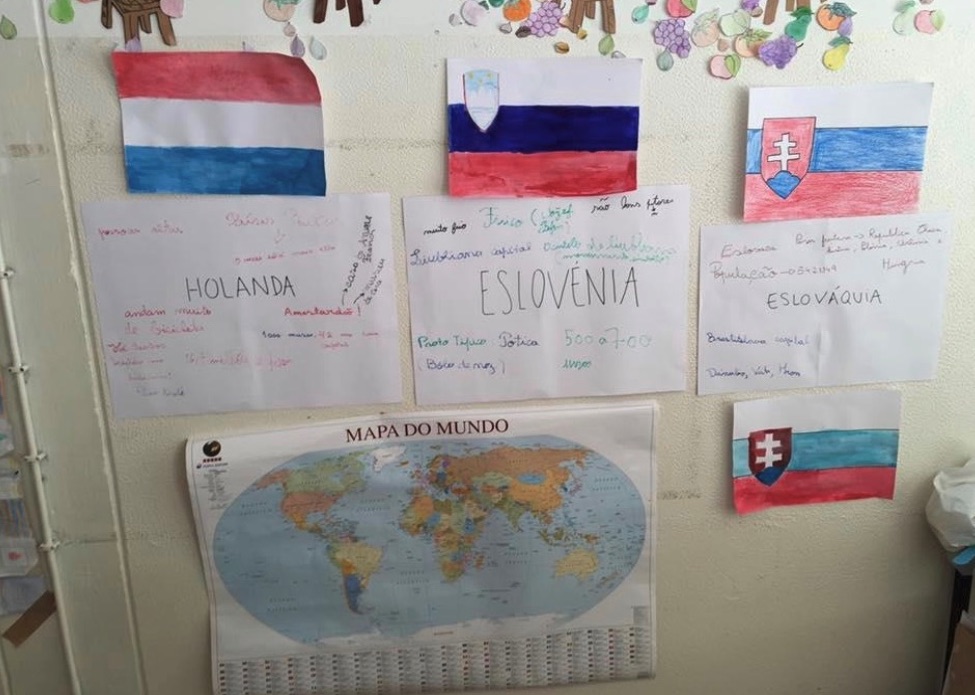
Figure 5: Mind maps created by the students about each country
On Day 2, pupils had to solve some mathematical problems in a very engaging way through a worksheet (Figure 6). In fact, each pupil got a worksheet with mathematical problems and had to try to solve them in a creative way. This mathematics-related activity implied a trip to each country. By participating collaboratively in the activity, the pupils had to choose the path they wanted to follow. For example, the Slovakian group made the calculations to Bratislava and the Netherlands group made the ones heading to Amsterdam. Afterwards they were invited to create a typical symbol and landscape[1] from the country they would be visiting. In Figure 7, one is able to observe the sort of symbols created by the pupils. They used recycling material to create Dutch tulips, Slovakian mountains and the French Tour Eiffel, for example.
[1] These were used in the creation of Luko’s picture book.
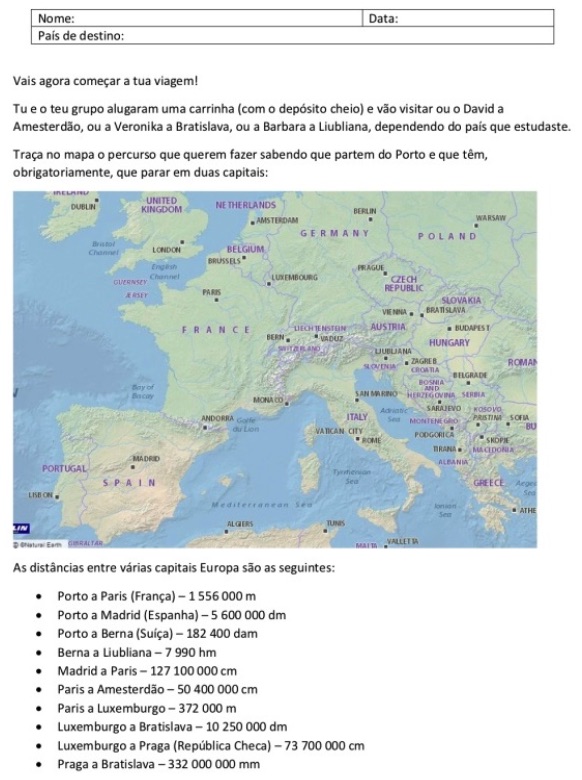
Figure 6: Worksheet about Maths and the distance calculation
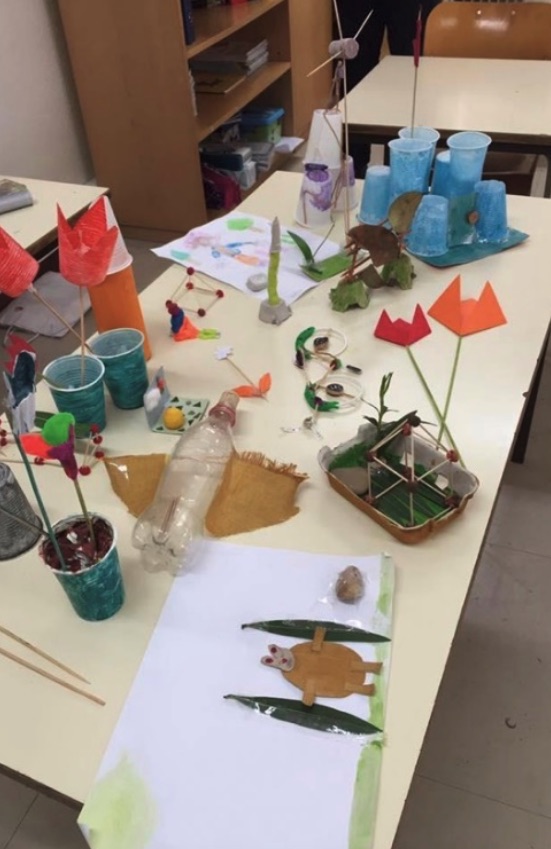
Figure 7: Typical symbols from each country created by the pupils
On Day 3, pupils learned the numbers, greetings and a song in the languages of the different countries. During the last day, children had the chance to participate in a sum-up activity. In fact, after having finished the poster (Figure 8) for their presentation with the information they had collected and learned over the previous days, they then presented each country. In the end, they completed an evaluation worksheet about their learning throughout all the activities and their teachers’ performance.
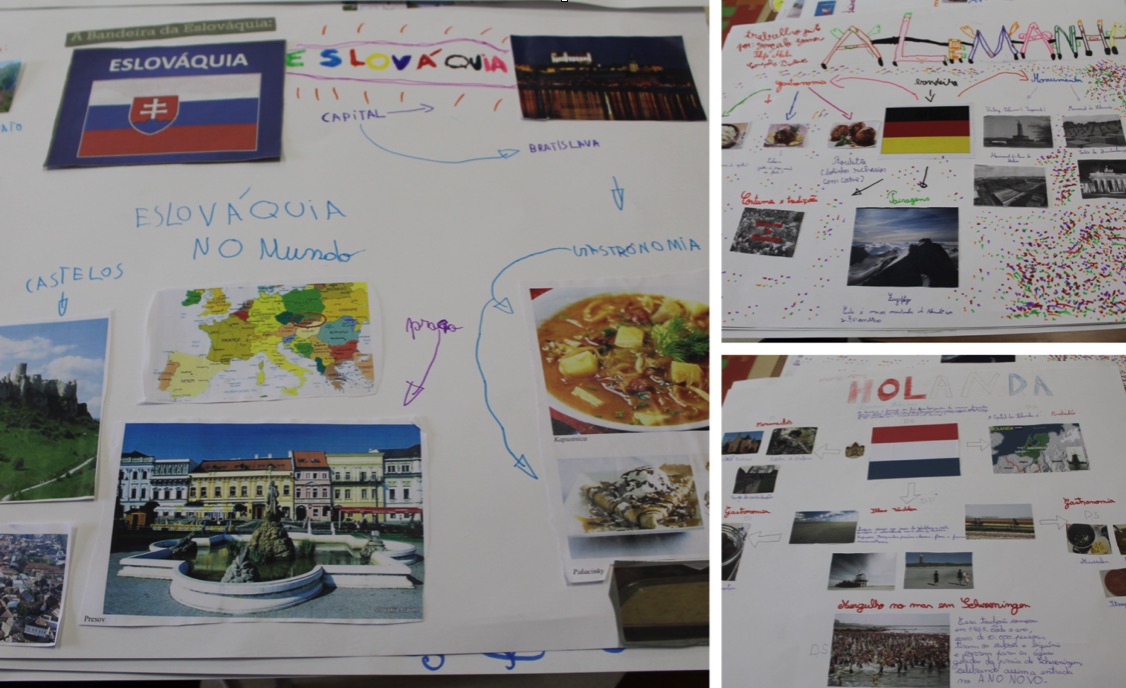
Figure 8: Posters developed collaboratively
After having a clearer overview of the countries, their location, language and culture, pupils were able to engage in the creation of Luko’s story picture book. This proved to be a true plurilingual and pluricultural activity promoted by the teachers-to-be from Portugal, Germany, Slovakia and the Netherlands (see Appendix 2, for an overview of the whole lesson plan dedicated to this activity).
As we can observe in Appendix 2, the lessons started with a ‘Warm up’ activity, in which pupils had to answer questions (How are you? Which countries have you been to?) and to repeat phrases they had previously learned (I have been to…) With this type of question, the teacher leads over to the project topic, i.e., travelling. In order to create a semi-authentic learning situation, the teacher explained to the pupils that she found a suitcase on her way to school, which she had brought with her. In this suitcase, one could find objects which belonged to different countries (namely, a little Eiffel Tower, a postcard of Porto). Pupils took the objects out of the suitcase in order to describe them and try to find out what they were.
Afterwards, pupils were able to participate in a storytelling activity, by focusing on Luko’s story and this refugee’s journey. Through the picture book, which pupils helped to create, they learned about the topic and what was at stake when one abandons his/her country to find his/her brother. In reality, pupils learned that while travelling around the different countries, Luko came in contact with the citizens, the different languages and cultural symbols. At the same time, while participating in the storytelling process, pupils had the chance to work with stickers which represented the animals which could be found in the countries (Figure 9). These animals are the animals which Luko gets to know throughout the story.
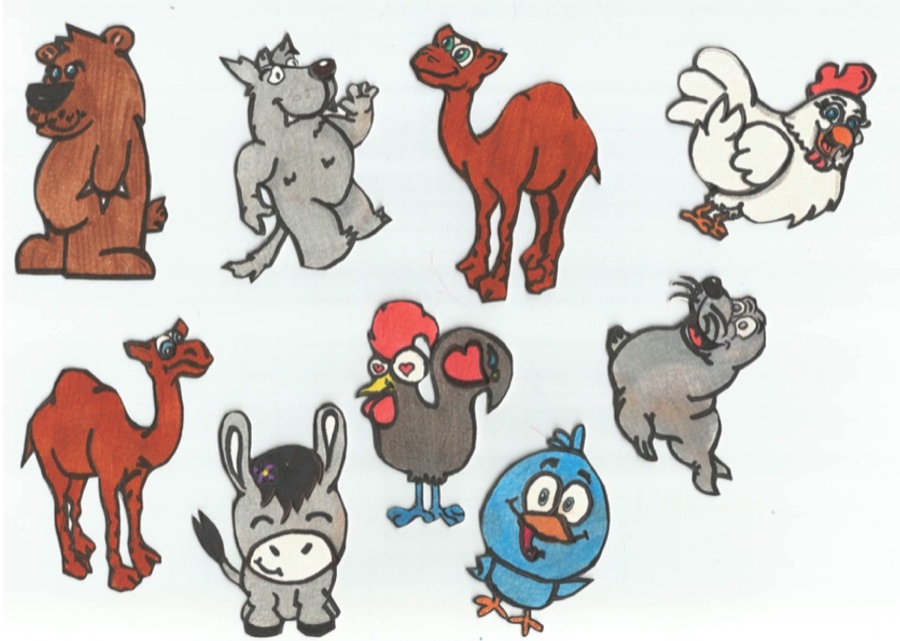
Figure 9: Stickers with animals from the different countries’ biodiversity
After getting to know the story, and in order to assess pupil’s comprehension, they discussed with the teacher its content, by answering questions such as: “Where does Luko come from?”, “How many friends did Luko make?”, “How did Luko and his friends travel from Slovenia to Slovakia?” and “How does Luko feel in Italy?”. In order to memorize the new vocabulary related to animals, the pupils also had the chance to play the ‘Snap’ game in groups of four to five. Sitting around a table, pupils played a sort of memory game, in which the teacher named an animal and the pupils tried to find the right picture by laying fly swatters on it. The pupil who found the right picture first received a chocolate coin. The pupil with the most coins won this gamified activity.
Because the ending of the story was not revealed, pupils got the chance to think about how Luko’s story would end. After having discussed it in groups, they tried to perform their version while wearing masks representing the different animals of the story. After observing each group’s performance, the pupils also had the chance to participate in the feelings game. The teacher drew a large circle on the black board, with eyes, nose and ears and asked the class different questions, such as: “How does Luko feel when he arrives in Italy?”, “How does Luko feel on his long journey?” among others. Pupils answered the questions by walking up to the board and creating a facial expression describing the feeling. In fact, as we know, any story that sparks joy, fear, surprise, unexpectedness, which teaches something new and novel will be remembered because it is an emotionally-charged event (Gallo, 2016). This is the case of Luko’s journey.
After getting to know the story’s true ending, pupils had the chance to participate in a Kahoot! activity (https://create.kahoot.it/share/luko-s-journey-story-game/676bf66c-63d5-42e8-9c28-f26f2b2ec47b), by answering a digital quiz, which focuses on the repetition of feelings and the comprehension of the story.
Towards the end of the lesson, the teacher laid a big map on the ground, focusing on the countries which could be found within the story. The class formed groups and each group analysed the map, by recognizing the shape of the country they had researched earlier. Once they found it, they had to stand beside the country’s shape and they had to greet the teacher by using the greetings used in their specific country (Hello, Ciao, Živjo, Ahoj, Hallo, Salut, Olá). Afterwards, the teacher also said a greeting from one of the countries and the pupils had to identify the corresponding country, by moving towards its shape. At the end of the lesson, pupils had the chance to perform a song together, whose rhythm and lyrics were created and inspired by Luko’s story. With such an activity, the pupils’ creative skills were stimulated.
Conclusions
In a world so full of radicalism, of fundamentalism and cultural prejudice, but also of connections between people and of migration, the key concept of the EPTE programme has undoubtedly been intercultural education – the building of a rich and inclusive intercultural third space, within a dimension of respect for one’s and the other’s culture.
The final global assessment done by all the EPTE students emphasized, among others, the following strengths and opportunities of the programme:
- learning about other countries, and different cultures
- discussing the students’ different educational systems, leading to a different point of view of one’s own educational system
- improving English
- learning by doing, not memorization (practical work)
- developing intercultural and multidisciplinary projects in multicultural teamwork
- putting theoretical concepts into practice (in primary schools)
- implementing different evaluation methods: oral presentations, project work, debates, lab work, individual/pair/group work, etc.
By taking into account the several dimensions in which the activity was developed and by analysing its outcomes and debates, we can conclude that: a) interdisciplinary approaches favour the development of a project work methodology; b) collaborative projects related to pupils’ interests favour critical thinking; c) European values can be tackled through the development of both plurilingual and intercultural competences at primary school; and, d) languages education can contribute towards the reflection on present-day topics.
References
Athanassiou, N., McNett, J. M., & Harvey, C. (2003). Critical thinking in the management classroom: Bloom's taxonomy as a learning tool. Journal of Management Education, 27(5), pp. 533-555. https://doi.org/10.1177/1052562903252515
Beacco, J-C., Byram, M., Cavalli, M., Coste, D., Cuenat, M. E., Goullier, F., & Panthier, J. (2010). Guide for the development and implementation of curricula for plurilingual and intercultural education. Council of Europe.
Boss, S. (2011, Sept. 20). Project-based learning: A short history. Edutopia. https://www.edutopia.org/project-based-learning-history
Byram, M. (2006). Languages and identities. Council of Europe. https://rm.coe.int/preliminary-study-languages-and-identities-intergovernmental-conferenc/16805c5d4a
Byram, M., Gribkova, B., & Starkey, H. (2002). Developing the intercultural dimension in language teaching: A practical introduction for teachers. Council of Europe.
Byram, M., Holmes, P. & Savvides, N. (2013). Intercultural communicative competence in foreign language education: Questions of theory, practice and research. Language Learning Journal, 41(3): 251-253. https://doi.org/10.1080/09571736.2013.836343
Council of Europe (2001). Common European framework of reference for languages: learning, teaching and assessment. Language Policy Division.
Cruz, M., & Medeiros, P. (2006). European plurilingualism and online mobility at primary schools. International Journal of the Humanities, 3(2). https://doi.org/10.18848/1447-9508/CGP/v03i03/41575
Cruz, M., & Orange, E. (2016). 21st century skills in the teaching of foreign languages at primary and secondary schools, TOJET: The Turkish Online Journal of Educational Technology, Special Issue for IETC, ITEC, IDEC, ITICAM, 1-12. https://www.academia.edu/29096040/21st_Century_Skills_In_The_Teaching_Of_Foreign_Languages_At_Primary_And_Secondary_Schools
Deardorff, D. (2006). The identification and assessment of intercultural competence as a student outcome of internationalization at institutions of higher education in the United States. Journal of Studies in International Education, 10(3). https://doi.org/10.1177/1028315306287002
Dewey, J. (1991). How we think. Prometheus Books. (Original work published 1910).
Dewey, J. (1966). Democracy and education. Free Press. (Original work published 1916).
Duarte, S., & Cruz, M. (2017). From and beyond gamified activities in primary English Learning. [Paper presentation]. X Conferência Internacional de TIC na Educação - Aprender nas nuvens / Challenges 2017 Conference-Learning in the clouds, Braga, Portugal.
Gallo, C. (2016). The storyteller’s secret: From TED speakers to business legends: Why some ideas catch on and others don’t. St. Martin’s Press.
Katz, L. G., & Chard, S. (2000). Engaging children's minds: The project approach (2nd ed.). Ablex
Kramsch, C. (1993). Context and culture in language teaching. Oxford University Press.
Krek, J., Losito, B., Ridley, R. & Hoskins, B. (2012). Good practices report. Participatory citizenship in the European Union. Institute of Education. https://ec.europa.eu/citizenship/pdf/report_3_good_practice.pdf
Starkey, H. (2002). Citoyenneté démocratique, langues, diversité et droits de l’homme : Guide pour l'élaboration des politiques linguistiques éducatives en Europe [Democratic citizenship, languages, diversity and human rights: A guide for the development of language education policies in Europe]. Conseil de l’Europe.
Starkey, H. (2003). Compétence interculturelle et éducation à la citoyenneté démocratique : Incidences sur la méthodologie d’enseignement des langues. [Intercultural competence and education for democratic citizenship: Implications for language teaching methodology]. In M. Byram (Ed.), La compétence interculturelle. Conseil de l’Europe.
University of Ljubljana (2017). About EPTE. https://www.pef.uni-lj.si/758.html
Vommer, H. J. (2006). Languages across the curriculum. Council of Europe.
Appendix 1: Cross-curricular Lesson Plans
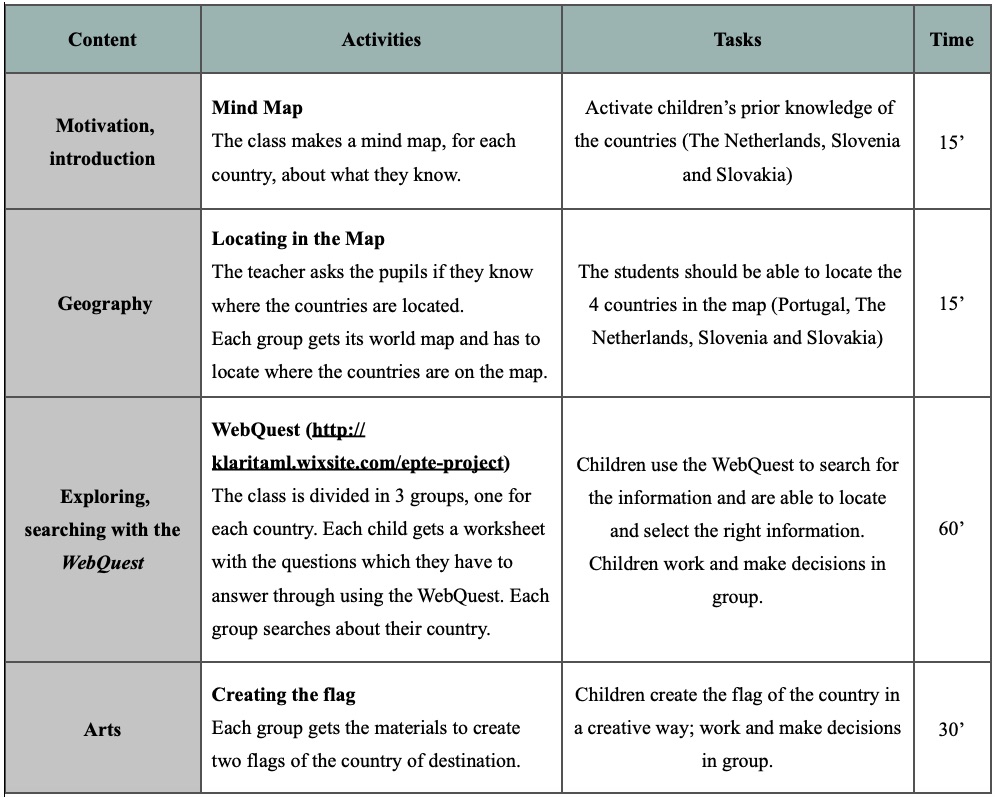
Table 2 - Day 1: Getting to Know the Countries
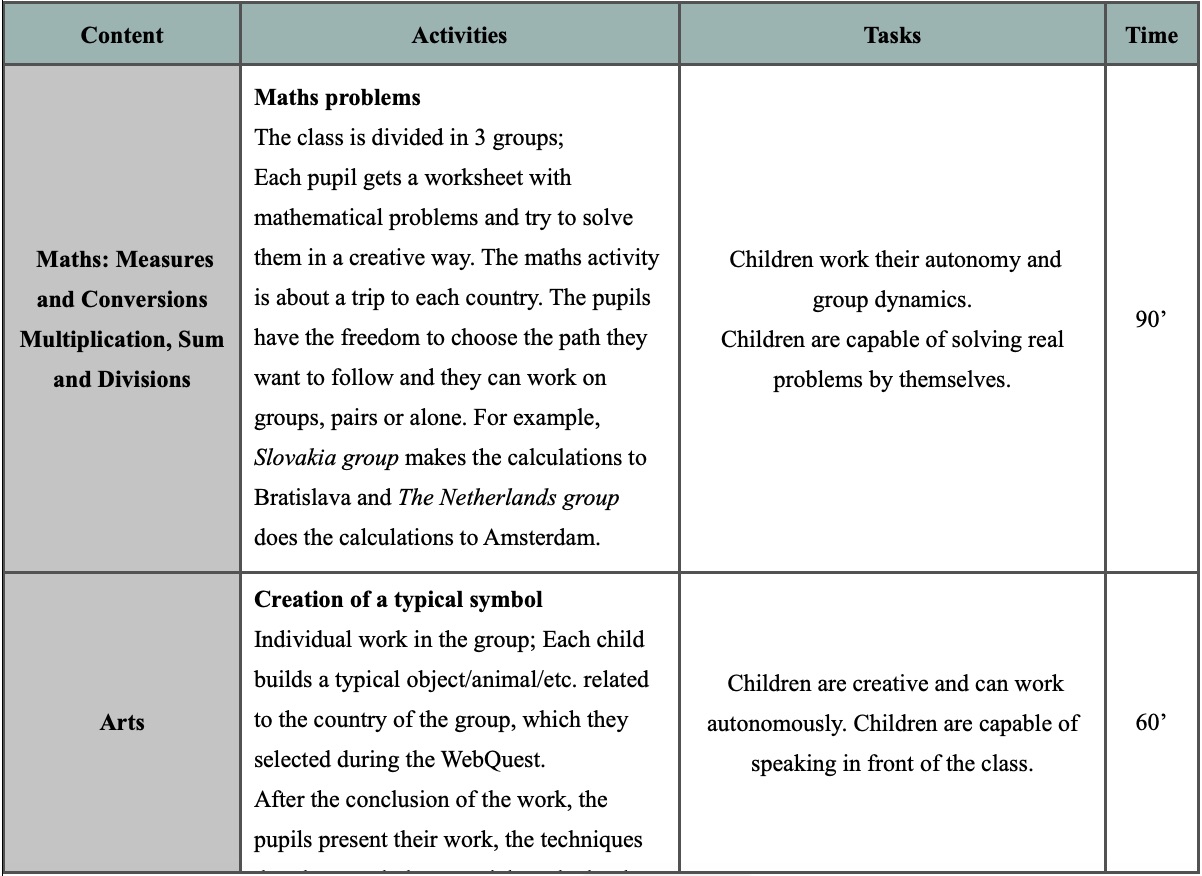
Table 3: Travelling to the Countries
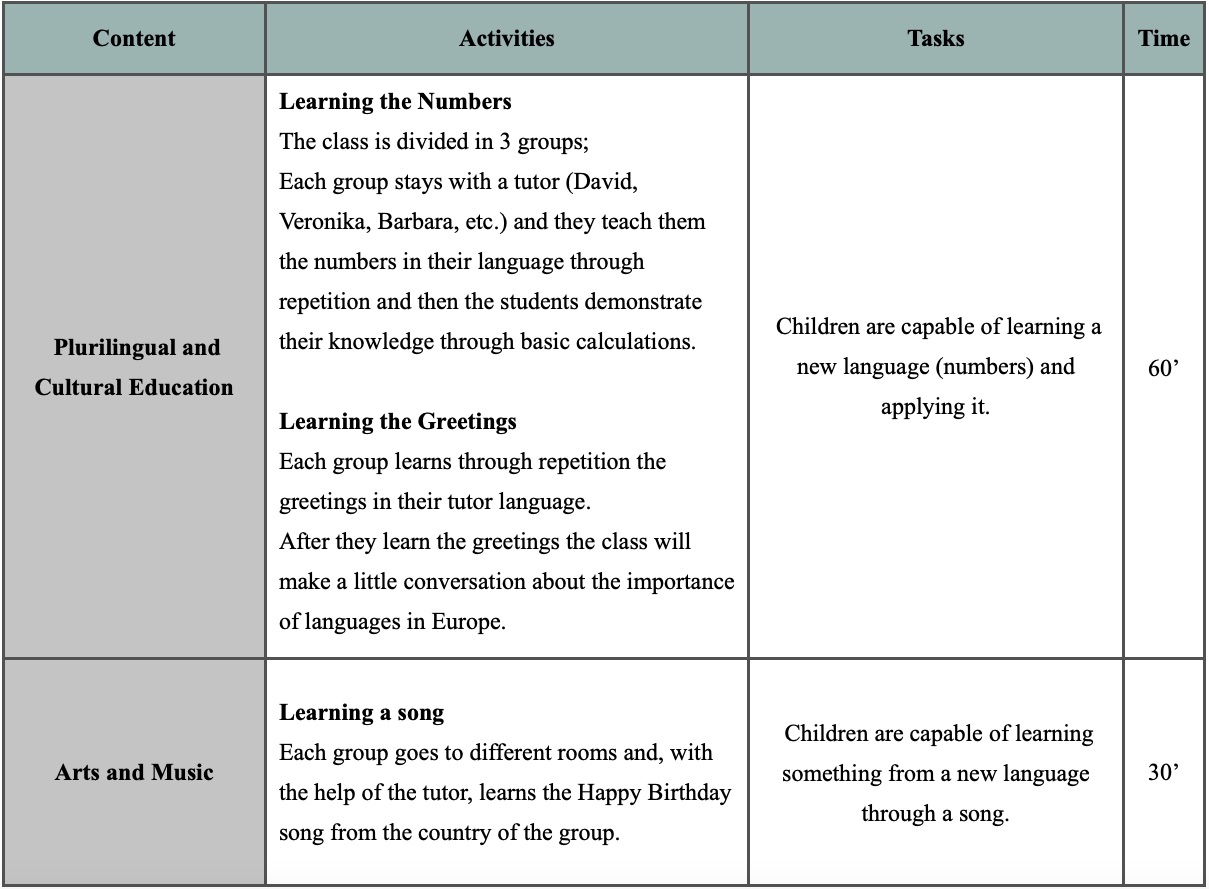
Table 4: Visiting the Countries

Table 5: Returning to their Home Country (Portugal)
Appendix 2: Lesson Plan on Luko’s Journey
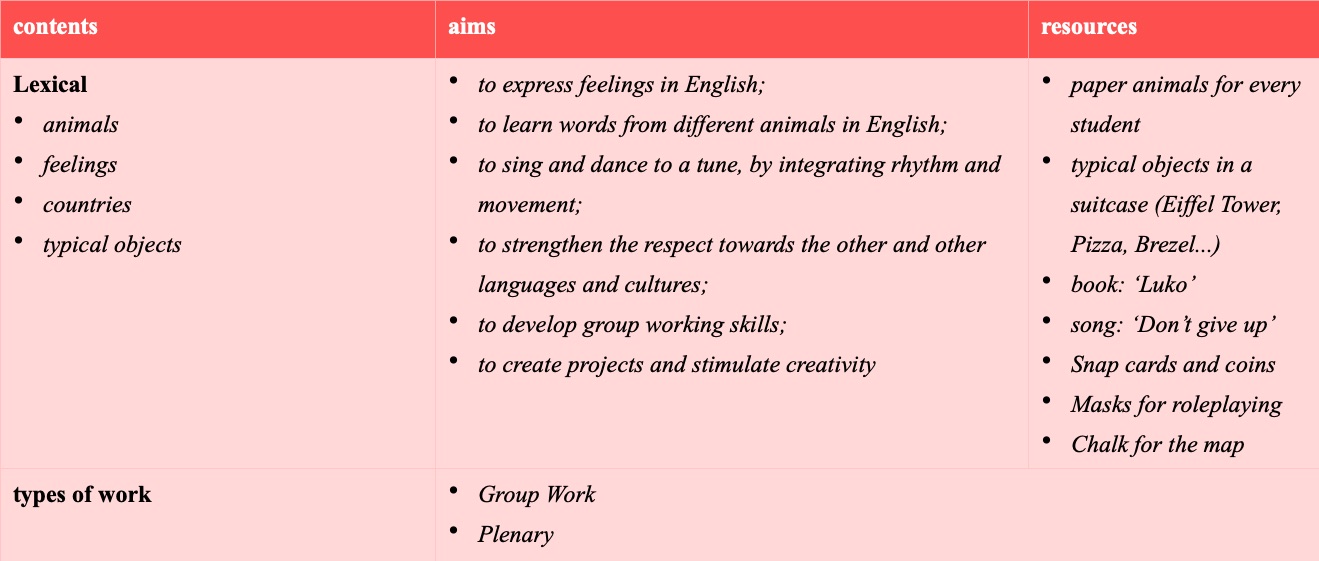
Table 6: Lessons Contents, Aims and Resources
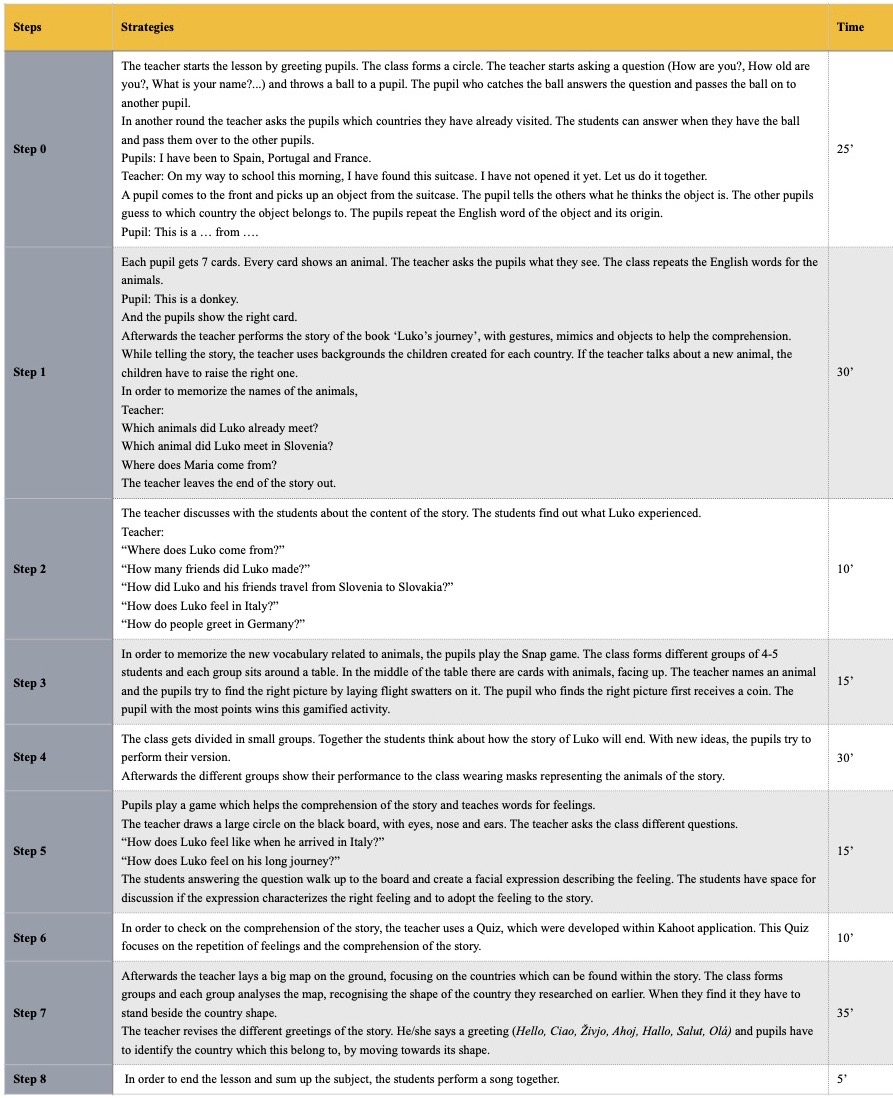
Table 7: Lesson Procedures

